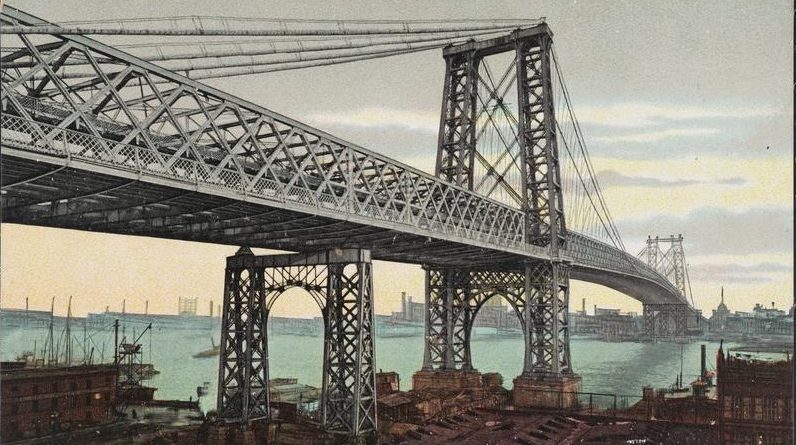PODCAST The story of the Williamsburg Bridge — poorly received when it was built but vital to the health of New York City
Sure, the Brooklyn Bridge gets all the praise, but the city’s second bridge of the East River has an exceptional story of its own.
In this episode, we’ll answer some interesting questions, including:
— Why is the bridge named for a 19th century industrial neighborhood in Brooklyn and why is it not, for instance, called the Manhattan Bridge (a name not in use yet in 1903) or the East River Bridge (which was its original name)?
— Why did everybody think the bridge looked so unusually ugly and how did the city belatedly try and solve the problem?
— Why did one population in the Lower East Side find the bridge more important than others?
— And why was the bridge is such terrible shape in the 20th century? Did it really almost collapse into the river?
PLUS: How the fate of the two neighborhoods linked by the Williamsburg Bridge would change radically in the 115 years since the bridge was opened.
Listen Now: Williamsburg Bridge Podcast
________________________________________________________
The Bowery Boys: New York City History podcast is brought to you …. by you!
We are now producing a new Bowery Boys podcast every other week. We’re also looking to improve the show in other ways and expand in other ways as well — through publishing, social media, live events and other forms of media. But we can only do this with your help!
We are now a member of Patreon, a patronage platform where you can support your favorite content creators for as little as a $1 a month.
Please visit our page on Patreon and watch a short video of us recording the show and talking about our expansion plans. If you’d like to help out, there are five different pledge levels (and with clever names too — Mannahatta, New Amsterdam, Five Points, Gilded Age, Jazz Age and Empire State). Check them out and consider being a sponsor.
We greatly appreciate our listeners and readers and thank you for joining us on this journey so far.
_________________________________________________________
We’d also like to thank WeWork for sponsoring the Bowery Boys podcast. Enter to win a 1-month hot desk membership to WeWork checking into this link. This contest only last a few more days and the winner will be announced on March 30.
And we’d also like to thank our additional sponsors Hulu (and the gripping new thriller The Looming Tower) and Audible. For a free 30-day trial (and a free audiobook) go to audible.com/bowery or text the word BOWERY to 500-500
________________________________________________________________________
A map of the City of Williamsburgh and Town of Bushwick including Green Point, 1852
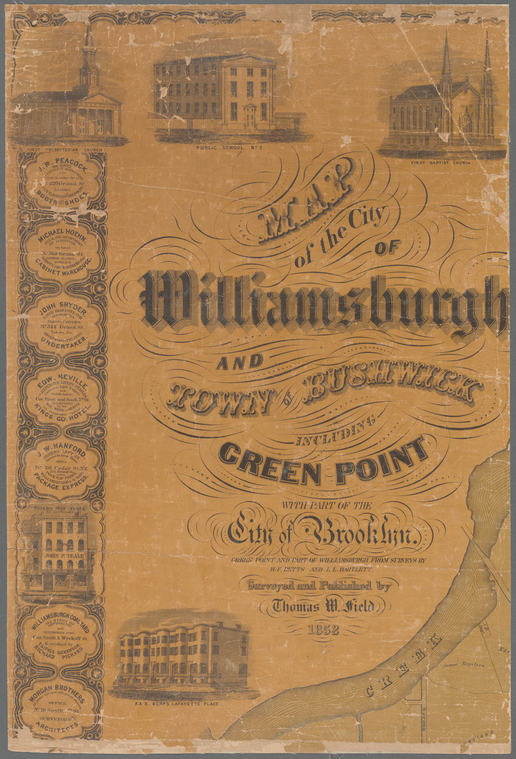
In 1902, the bridge was finally near completion, but many were worried about the bridge’s functional plainness.
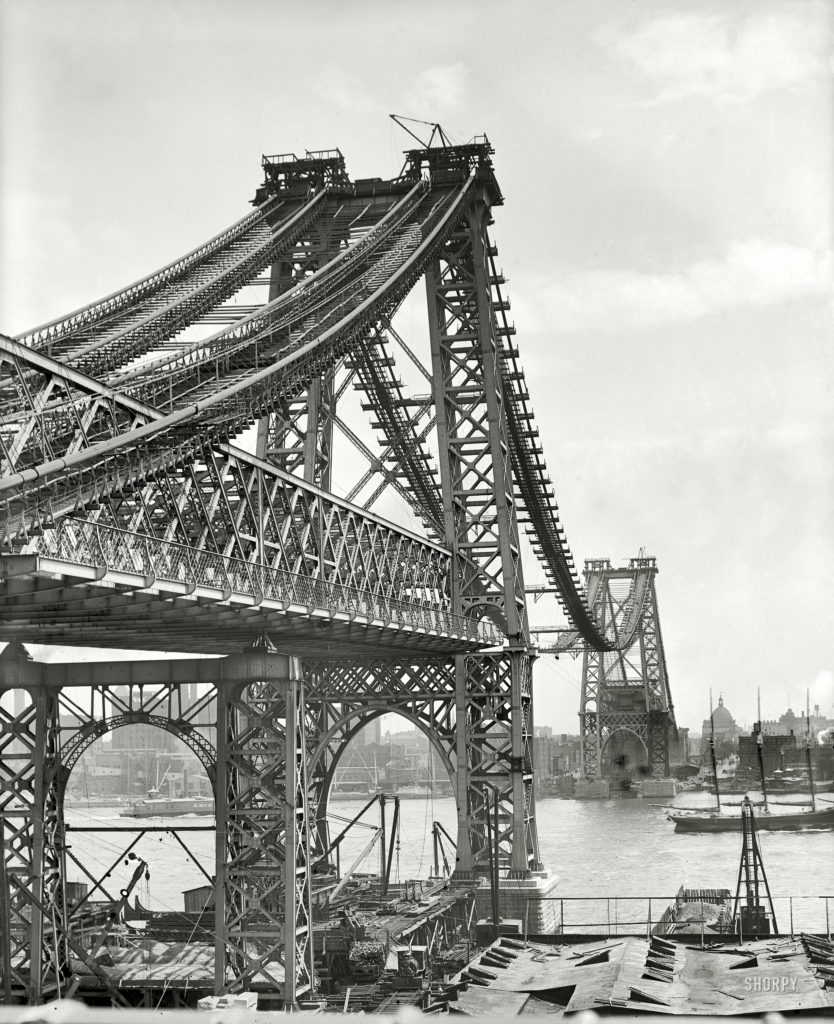
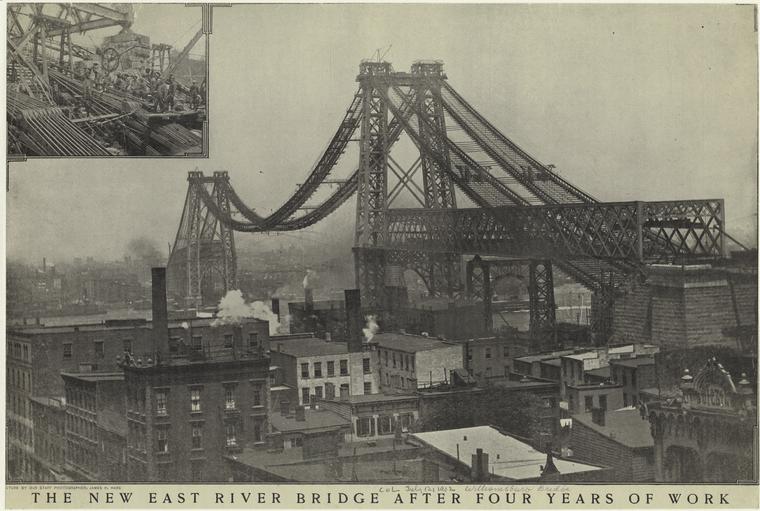
A 1903 fire on the bridge created a scary scene over the East River, but the cables and wires proved durable.
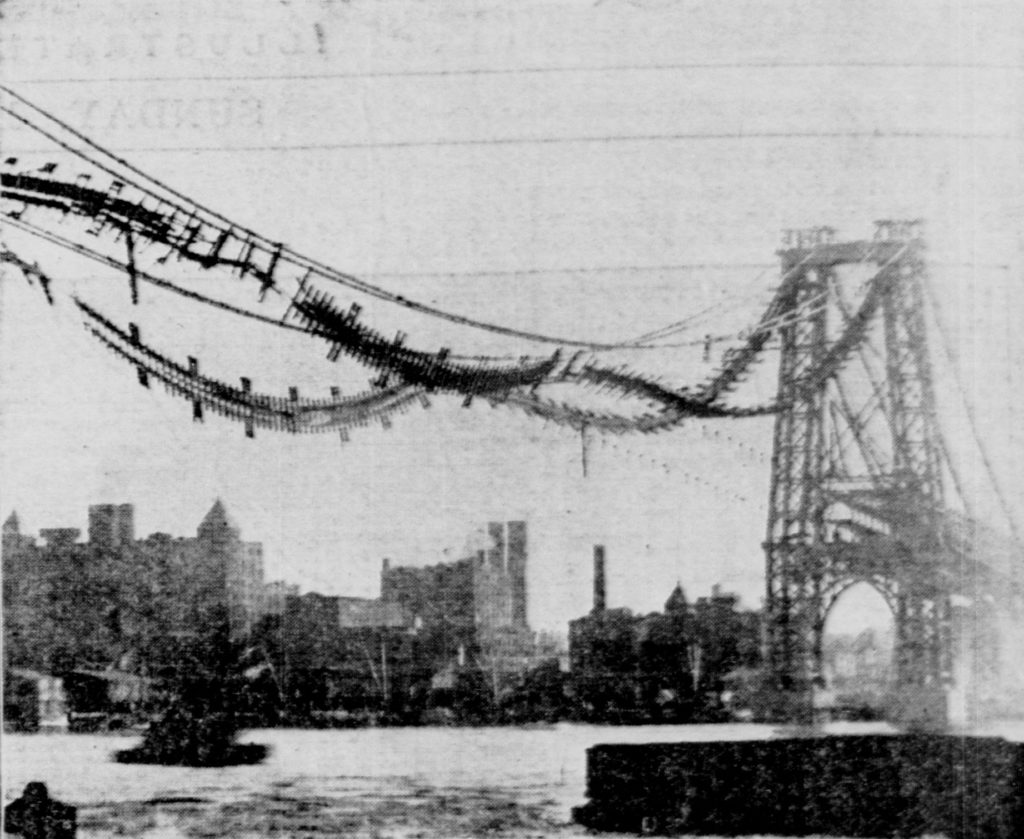
From the Brooklyn Daily Eagle souvenir section celebrating the opening of the bridge:
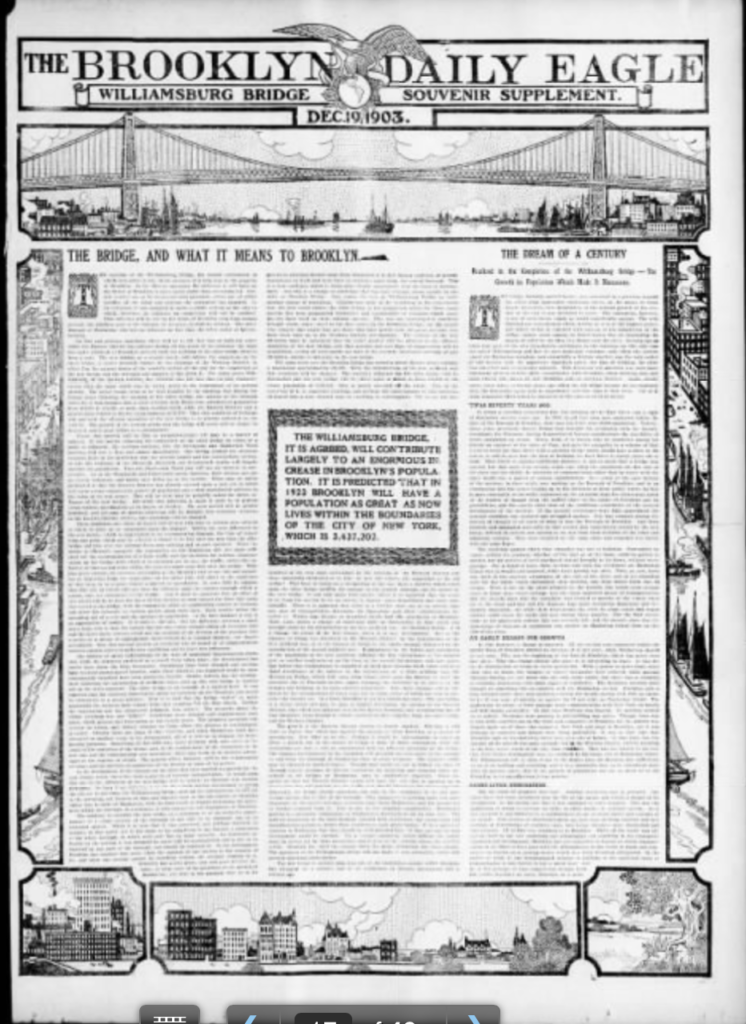
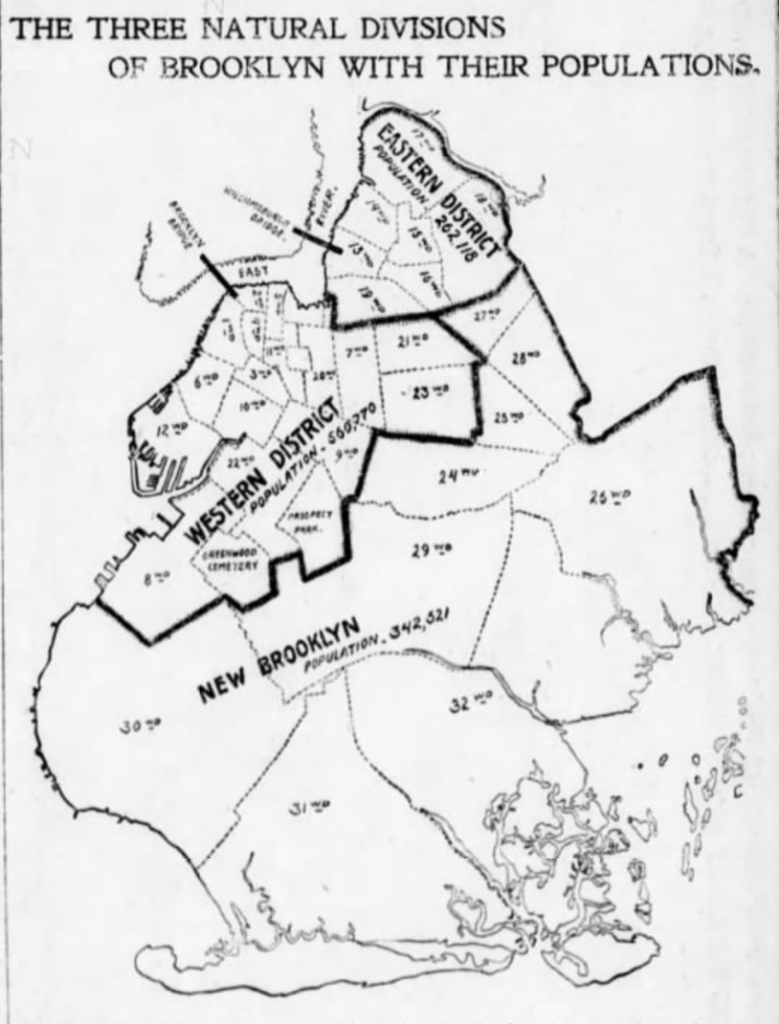
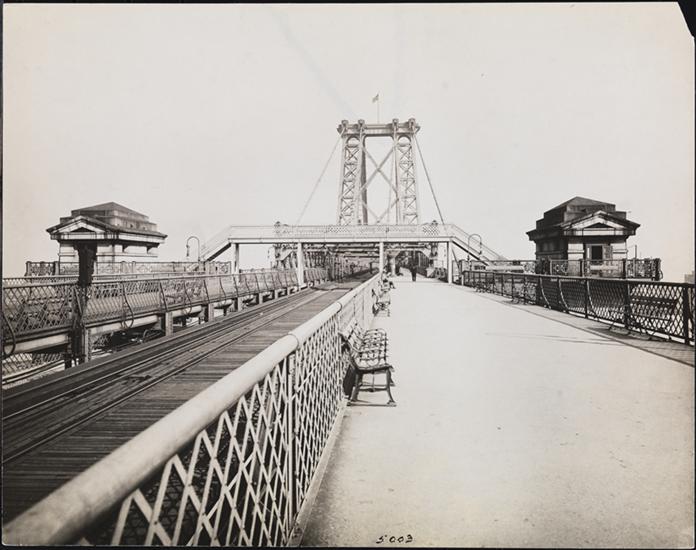
An illustration from the 1915 book New York: The Wonder City
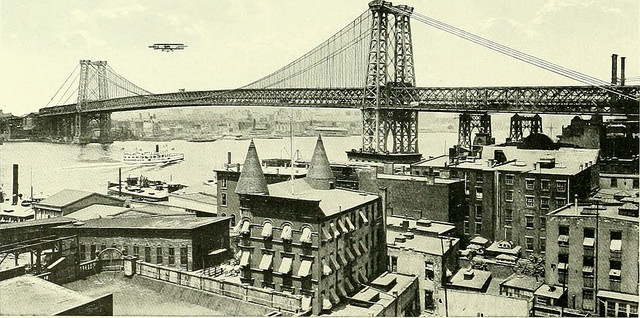
Seen from South Eighth and Berry Streets in Brooklyn, 1935.
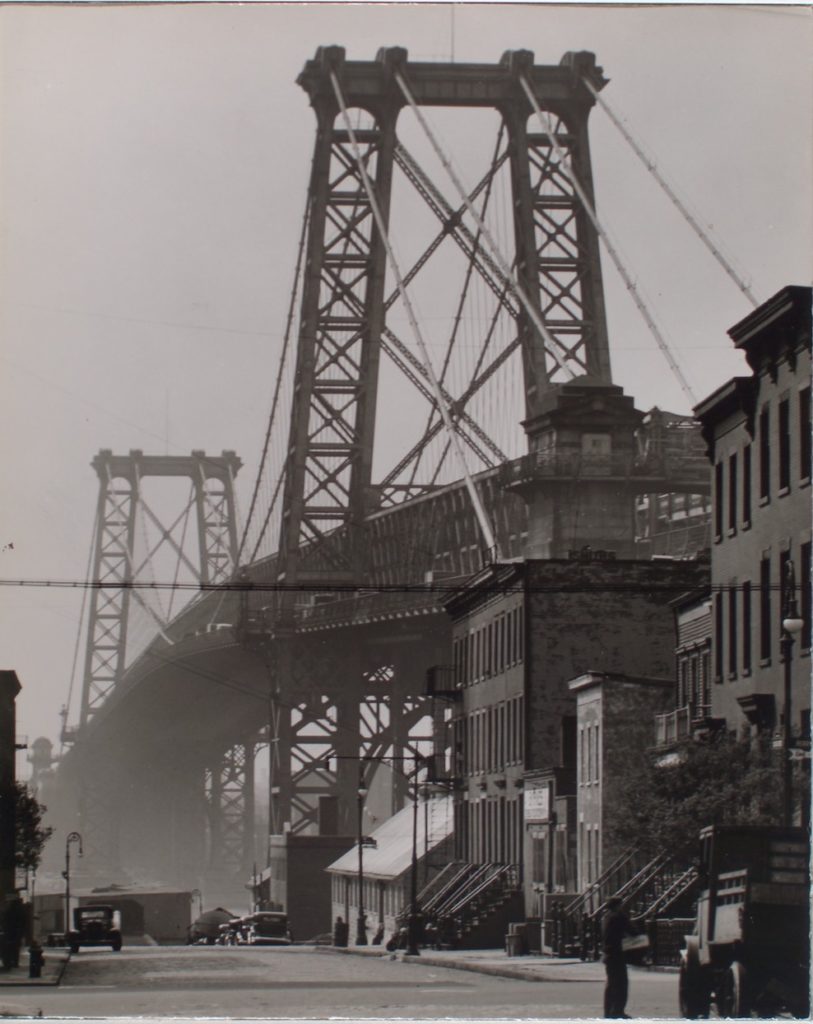
The old spelling of the name continually popped up in various places as late as the early 20th century. This passenger tickets dates to between 1903 and 1915.
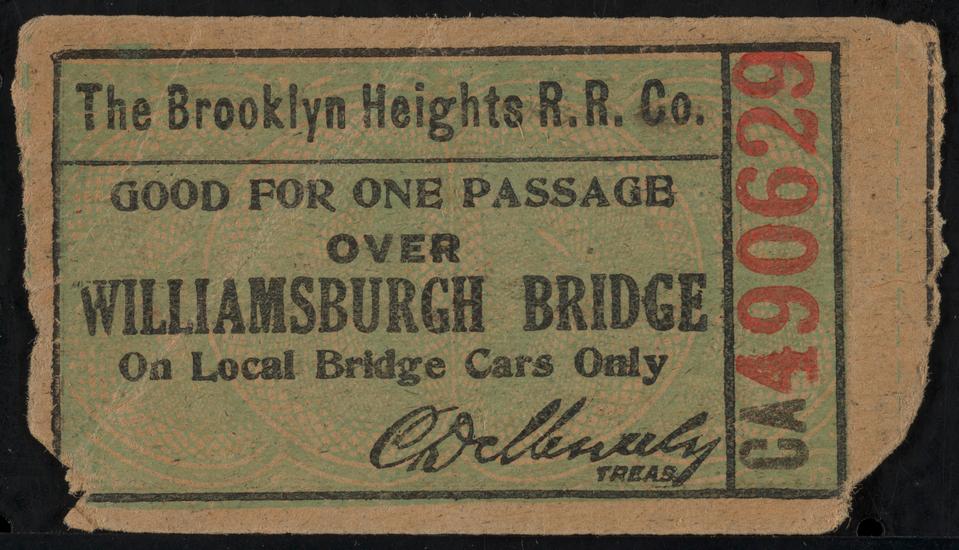
Williamsburg Bridge Plaza — and the handsome equestrian statue of George Washington — festooned with banners at the start of World War I.
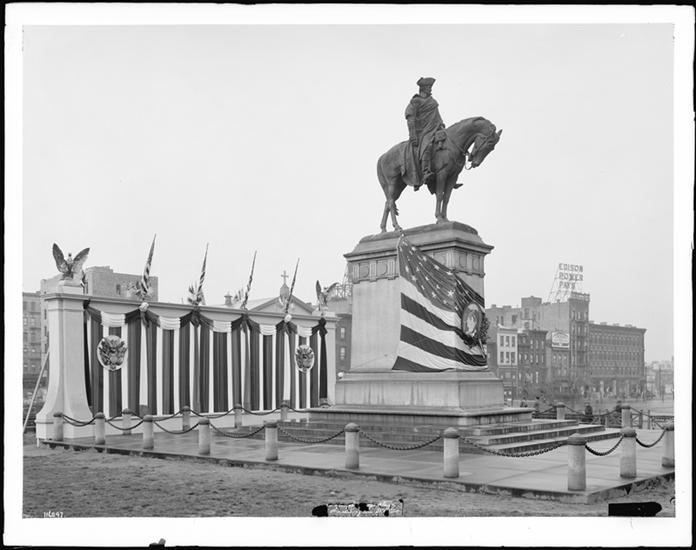
The approach to the Williamsburg Bridge from the Manhattan side. Delancey Street had to be widened to accommodate the influx of transportation options flooding onto the bridge.
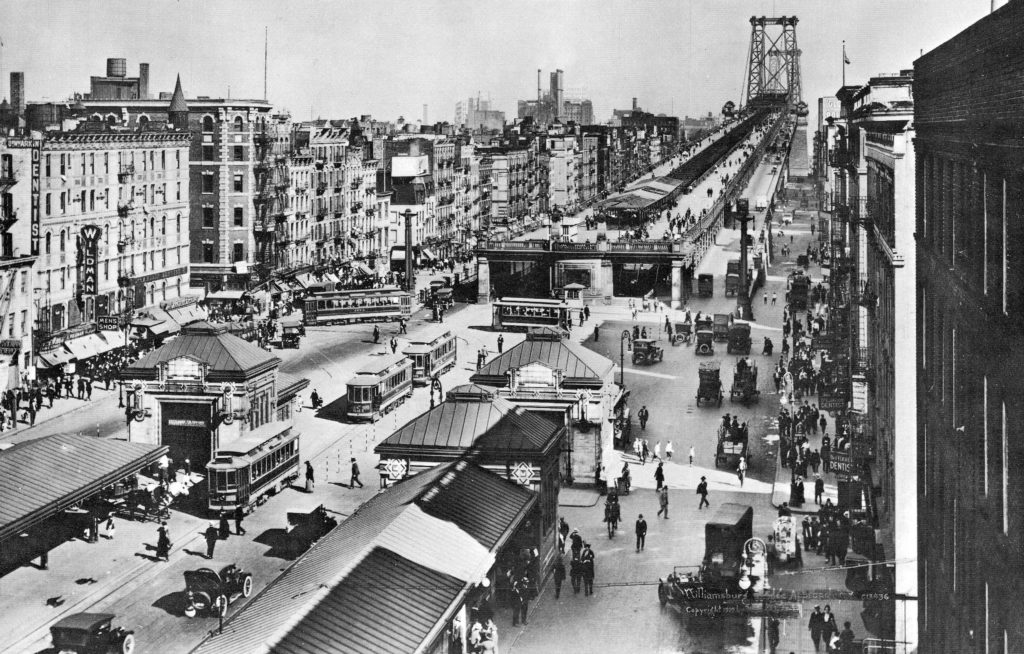
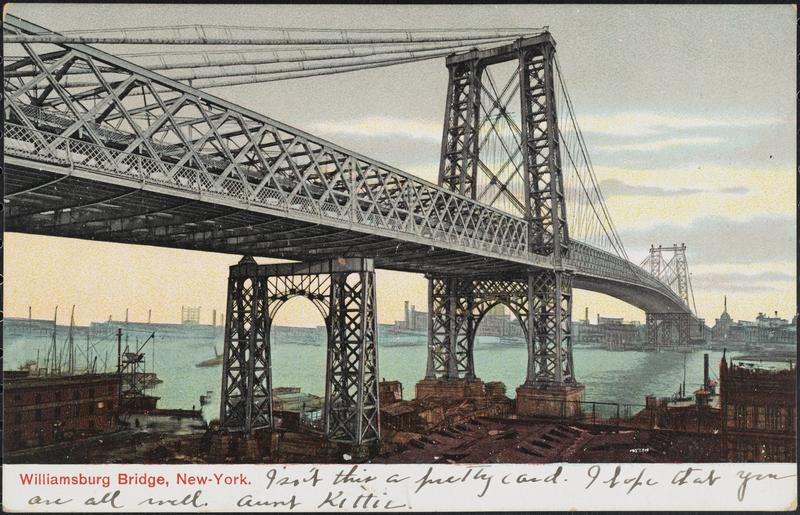
The bridge is central to the growth of New York’s immigrant (and particularly Jewish) communities. While its construction did displace thousands of people, the bridge would actually facilitate better living conditions for Lower East Side immigrant groups by encouraging migration to less populated Brooklyn neighborhoods. The New York Herald even called it the “Jews Highway” as those of Eastern European and Russian Jewish heritage transplanted to Williamsburg.
The ritual of tashlikh תשליך has often been performed on the bridge.
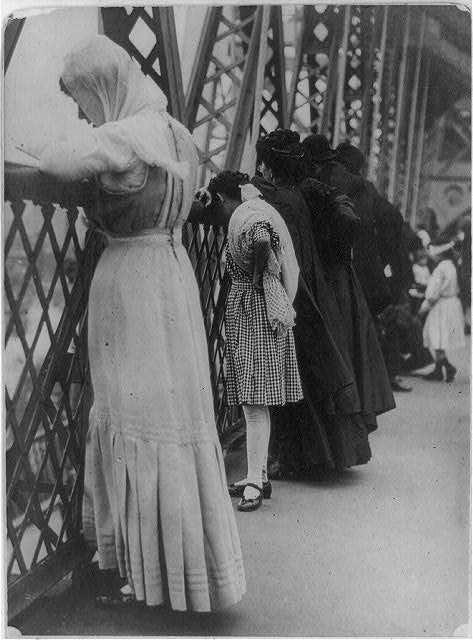
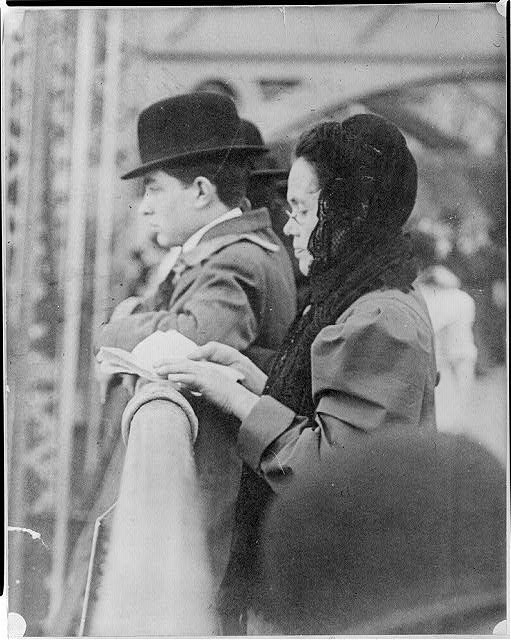
From the film The Naked City
FURTHER LISTENING
These past episodes were mentioned in this week’s podcast. After finishing the Williamsburg Bridge show, go back and give these a listen:

